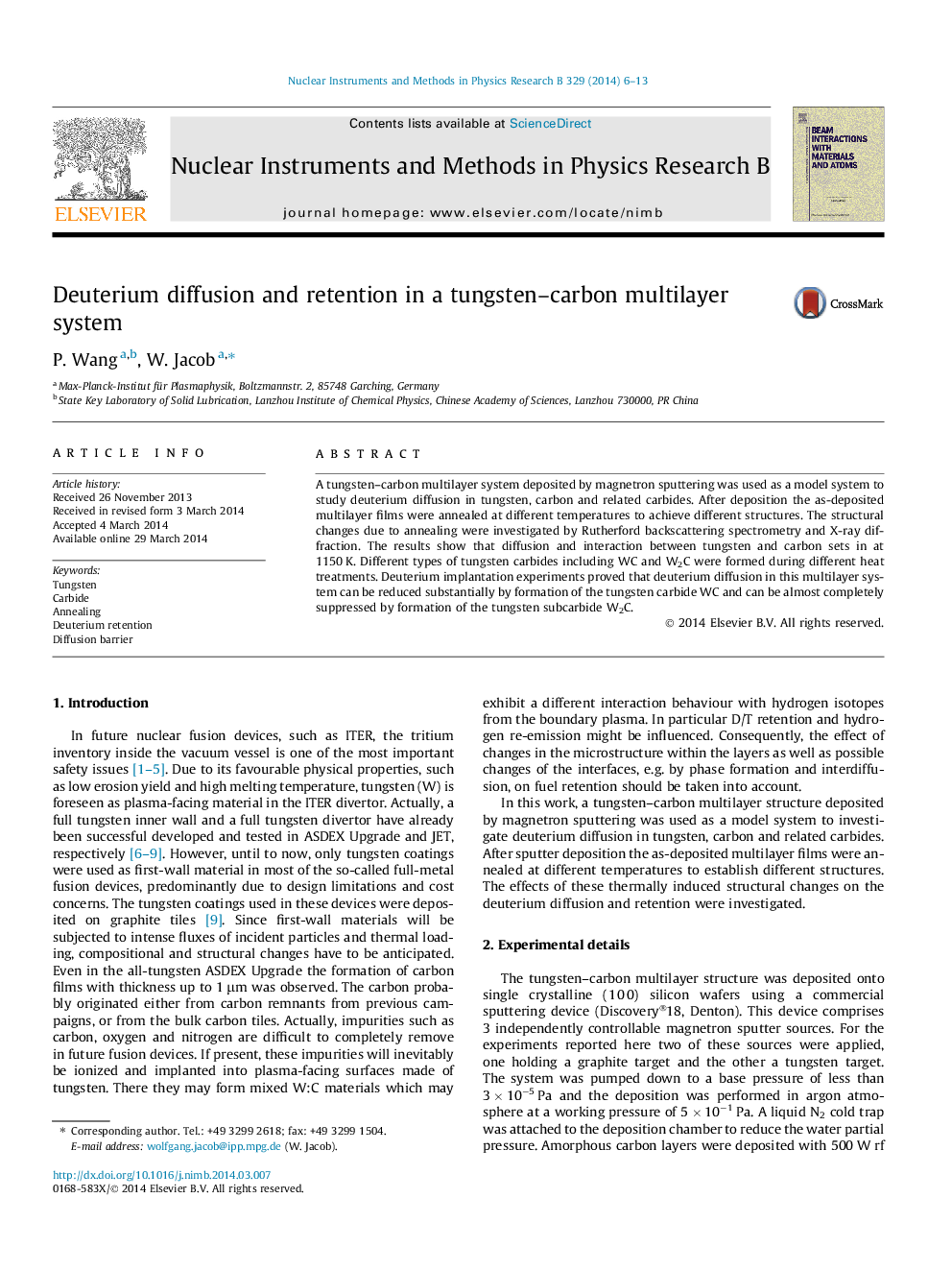| Article ID | Journal | Published Year | Pages | File Type |
|---|---|---|---|---|
| 8041806 | Nuclear Instruments and Methods in Physics Research Section B: Beam Interactions with Materials and Atoms | 2014 | 8 Pages |
Abstract
A tungsten-carbon multilayer system deposited by magnetron sputtering was used as a model system to study deuterium diffusion in tungsten, carbon and related carbides. After deposition the as-deposited multilayer films were annealed at different temperatures to achieve different structures. The structural changes due to annealing were investigated by Rutherford backscattering spectrometry and X-ray diffraction. The results show that diffusion and interaction between tungsten and carbon sets in at 1150Â K. Different types of tungsten carbides including WC and W2C were formed during different heat treatments. Deuterium implantation experiments proved that deuterium diffusion in this multilayer system can be reduced substantially by formation of the tungsten carbide WC and can be almost completely suppressed by formation of the tungsten subcarbide W2C.
Related Topics
Physical Sciences and Engineering
Materials Science
Surfaces, Coatings and Films
Authors
P. Wang, W. Jacob,
